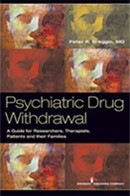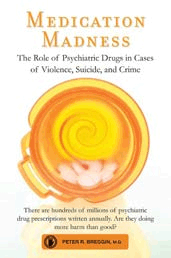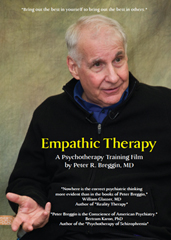Breaking News and Information January 2019
Current News
Study Finds Possible Root and Simple Treatment of Schizophrenia Symptoms
A ‘gold standard’ study finds deleting Facebook is great for your mental health
Mental health disorders common following mild head injury
Stimulants do not improve learning or test scores
Study links high levels of screen time to slower child development
|
|
|
Alert 81: Open Mic on the Dr. Peter Breggin Hour TODAY!
Effectively treating childhood anxiety can be done for less, new study finds
Air pollution and teenage mental health linked in study
The Future of psychiatry is digital – from mind-training apps to smartphone therapy
Chinese ‘tweets’ hint that happiness drops as air pollution rises
This is the second study reported today linking air pollution with poorer mental health (Roberts et al, 2019 and Zheng et al, 2019). Last year we posted a study linking air pollution to schizophrenia risk (Liang et al, 2018). Study finds early risers are 35% less likely to experience depression than night owls
Ian’s thoughts: A clearly emerging signal in a lot of recent research we’ve been posting here is that there are close correlations between the quality and nature of sleep and mental health, including not only psychological states but endpoints like Alzheimers disease. Some of these correlations may not be causal, but they appear to indicate that a good night’s sleep is central to mental health. |
Australia: Providers face crackdown on chemical restraint of elderly
Ian’s thought: It’s fortunate that the term “chemical restraint” slipped through Pharmaceutically Correct (PC) language for its practice among the elderly. In contrast, chemical restraint of children in school is obscured with PC jargon like “ADHD.” The Environmental Impact Of Pharmaceuticals In Our Water
Best supplements for sleep: This plant root could drastically improve how you get to sleep
Study finds conveying happiness is easier through nonverbal cues
From problem-solving to motor skills, too much screen time delays early development
Happiness exercises benefit people recovering from substance misuse
|
|
|
People with obstructive sleep apnea at greater risk of death by benzodiazepines
Methylphenidate-Induced Psychotic Symptoms in 65-Year-Old Female
Meditation Linked With Fewer Colds & Other Respiratory Illnesses
|
|
|
Alert 80: Part II of VIII of Dr. Peter Breggin’s Inspired Interview about his Lifelong Reform
Video: Women who love fried chicken have a 13% higher risk of death
Towards Resilience and Possibilities and Away from Diseases and Symptoms
|
Scientists are gradually articulating ECT-induced “therapeutic” brain damage
Dr. Breggin’s Brain-Disabling Principles of Psychiatric Drugs, Lobotomy & ECT…
UK: Electroconvulsive therapy being used on teens in NHS trusts
UK: Darwin woman narrowly avoids ‘shock’ therapy without consent
|
5 Ways Yoga Can Benefit Your Mental Health
Fried Food May Be Killing You, a New Study Says. Here Are the Worst Offenders
Study: Live in the moment, don’t selfie or snap it
|
   |
Video: Interview of Professor Eric Anderson about the APA’s New Guidelines for Men & Boys
How Mindfulness Can Make Your Workouts More Effective
Childhood trauma affects brain and increases risk of substance use in adolescence, study finds
Child’s age at parental divorce can affect antidepressant use in adulthood
Use of prescription pills like Xanax in teens described as ‘epidemic’ in Halifax
|
|
Reclaiming Our Children – A Healing Plan for a Nation in Crisis, by Peter Breggin, MD |
Childhood lead exposure linked to poor adult mental health
Lead in water: Study shows many schools have far too much
New Research Shows Teen Binge Drinking Could Lead to Opioid Abuse
Stressed? Having a partner present — even in your mind — may keep blood pressure down
The American Psychological Association Has Made Choosing a Therapist Easy
Is Traditional Masculinity Harmful?
Ian’s thoughts: even if getting rid of traditional masculinity is a good idea, who but a fool would advocate for it if there was even one other nation on earth that could conceivably be a military aggressor and was not itself also seeking to eradicate stoicism, competitiveness and other alleged ills of men among its male population. There’s an ideal utopia, and there’s reality. We can dream about a utopia where all men are angels, but we have to expect and plan to live in the real world, and in so doing, we need men, with all their traditional risks and benefits. |
|
|
UK: Mentally ill people more at risk of losing benefits, study shows
Study Shows Opioid Deaths May be Linked to Drug Marketing
Taking a Walk Will Boost Your Creativity and Problem-Solving
Video: Eels in Thames ‘left hyperactive due to high levels of cocaine in water’ |
Scientific American: Proper Breathing Brings Better Mental Health
Digital Ritalin: new brain training game works as well as ‘chemical cosh’
Brain training app improves users’ concentration, study shows
Psychologists want to change how they treat men. That’s a problem.
|
|
|
Alert 79: Dr. Peter Breggin’s Inspired Interview about his Lifelong Reform Work (Part I)
Flashback (1973): Dr Breggin threatened by psychosurgery thug
The prescription drug epidemic no one’s talking about
Could this radical new approach to Alzheimer’s lead to a breakthrough?
Related study (2016): Toxins from blue-green algae cause Alzheimer’s-like brain changes
How Virtual Reality Can Help Treat Chronic Pain
Antidepressant Withdrawal: An Unknown Disorder?
|
|
|
New neurological study finds that falling in love can strengthen the body physically
What science is saying about teen sleep
Overdose deaths tied to antianxiety drugs like Xanax continue to rise
Mindfulness may ease menopausal symptoms
Meaningful life tied to healthy aging
|
A look at the brain boosting effects of exercise
How Yoga and Controlled Breathing May Counter Major Depression
14 Little Things You Can Do to Be Happier Right Now
Rich people’s most outstanding trait in face of challenge: Optimism
|
|
|
Survey: Americans Spend Nearly Half Their Waking Hours Looking At Screens
5 Ways Being In Nature Changes Your Brain, According To Science
What Does It Take to Have a Healthy Personality?
Research Suggests Trump’s Election Has Been Detrimental to Many American’s Mental Health
|
|
|
Happiness highest in states with lots of parks, libraries
Even a little marijuana may change teen brain, study finds
Recalling Positive Memories May Reduce Risk of Depression
Study: Many parents don’t know their kids have contemplated suicide
Australian nursing home residents “tuned into zombies” by prescription drugs: experts
|
|
Empathic Therapy Training Film – A Psychotherapy Training DVD |
Is It Safe To Take Melatonin Supplements While On Antidepressants? Here’s What Experts Say
Does Bullying Lead To Depression? A New Survey Demonstrates Just How Significant The Impact Can Be
VIDEO: Consumers may be unaware of suicide risks associated with popular prescription drugs
List of 203 prescription and over-the-counter meds that can cause depression and suicidality. Want to be happier? Try getting to know yourself
Children Can Suffer Serious Side Effects from Antipsychotic Medications
|
Study: Social-media junkies make riskier decisions
Tumbling Further Down the Rabbit Hole of Antidepressant Withdrawal Research
Antidepressants In Our Water Are Messing With Animals
Drug overdose deaths skyrocket among middle-aged women
|
|
Reclaiming Our Children – A Healing Plan for a Nation in Crisis, by Peter Breggin, MD |
Video: New study says social media could lead to depression
Certain Psychiatric Drugs Linked to Elevated Pneumonia Risk
How Humans Evolved to Love Horror Movies
Mindfulness May Enhance the Performance of US Special Forces
|
|
Talking Back To Ritalin, What Doctors Aren’t Telling You About Stimulants and ADHD, by Peter R Breggin, MD |
10 Bizarre Side Effects of Common Medications
Tobacco use linked with higher use of opioids and sedatives
Happiness is Contagious. Let’s Spread Some Joy Germs
Neuroimaging shows social exclusion spurs extremism in those vulnerable to radicalization
STUDY: Men and women remember pain differently
|
   |
APA issues first-ever guidelines for practice with men and boys
A critique of the APA’s new guidelines for practice with men and boys
Ian’s thoughts: today a rambunctious boy comes home from the doctor with an “ADHD” diagnosis and bottle of pills. Now we have to wonder if in the future boys will come home with a “boyhood” diagnosis and bottle of pills. While some of what the APA’s press release says has the ring of truth, perhaps we should be skeptical of institutions circumscribing innate “traditional” human traits (eg, stoicism, competitiveness, bravery, risk-taking, etc) as targets for remedial intervention. Moreover, when mental-health practitioners care for someone, they should see that individual, not the classes they belong to. The more we perceive someone’s sex, gender, race, etc, the less clearly we perceive them.
The study: Prevalence of Prescription Medications With Depression as a Potential Adverse Effect. And the list therefrom of the medications that can cause depression is in this PDF file. Decreased deep sleep linked to early signs of Alzheimer’s disease
Controlling children’s behavior with screen time leads to more screen time, study reveals
|
|
|
Dr. Breggin: How Love Can Reformat Our Lives
Co-use of prescribed benzodiazepines and opioids is increasing among older adults
Does love or lack of it make us crazy? From ancient history and literature to modern times.
A hormone released during exercise might protect against Alzheimer’s
|
|
|
CDC study shows veterinarians at increased risk of suicide
Adults with autism can read complex emotions in others
Study: Facebook use linked to perceptions of worsening physical health
|
|
|
The Monster in Our House: What Psychiatric Medication Did to My Father
Visions of Addiction: How Opioids Hijack the Brain
ADHD in Children Linked with Prenatal Antiepilepsy Drug Use
Writing your way out of postpartum depression
|
7 Tips to Motivate Yourself to Exercise
Dr. Zorba Paster: Exercise key to feeling better
Researchers Push Back Against Recommendation to Combine Antidepressants
Schizophrenia and Vitamin D Levels in Pregnancy
|
|
|
Ian’s thoughts: first described in the medical literature by Emile Kraepelin in 1887, scientists are still looking for a biomarker of schizophrenia, which if found would be a neurological fingerprint that even without other knowledge of a subject could confirm a DSM schizophrenia diagnosis. Perhaps some day neurological evidence for the diagnosis, or for any DSM diagnosis for that matter, will be found. Until then psychiatrists will keep pouring chemicals and blasting electricity into diagnosed brains as if they knew what they were doing. See also this recent related study we posted last year. Detecting depression: Phone apps could monitor teen angst
Depression in girls linked to higher use of social media
How running cured my anxiety – and a broken heart
|
|
Medication Madness – The Role of Psychiatric Drugs in Cases of Violence, Suicide and Crime |
Alert 76: Psychiatric Drug Withdrawal Projects & Courses
Antipsychotics Tied to Higher Risk of Death in Children
UK Poll: 24% use mindfulness sessions to support mental health
11 Meditation Apps to Help You Relax, De-Stress
Peter Gøtzsche: Why We’re Establishing an Institute for Scientific Freedom
|
|
Empathic Therapy Training Film – A Psychotherapy Training DVD |
Study: 85% report feeling more happiness when spending money on this
Psychology Explains Why You Won’t Keep Your New Year’s Resolution
Living with a Dog May Protect Your Child from Allergies
Depression, Anxiety Powerful Predictors of Poor Health
Antidepressants May Increase Hip Fracture Risk in Older Adults
|
|
Reclaiming Our Children – A Healing Plan for a Nation in Crisis, by Peter Breggin, MD |
Fed Panel Releases Draft Report on Pain Management
How to not let winter get you down
Try Dry January: Taking a break from alcohol can improve sleep and weight
Science of a Meaningful Life: Top 10 Insights of 2018
What Research Says About Sticking to New Year’s Resolutions
|
















